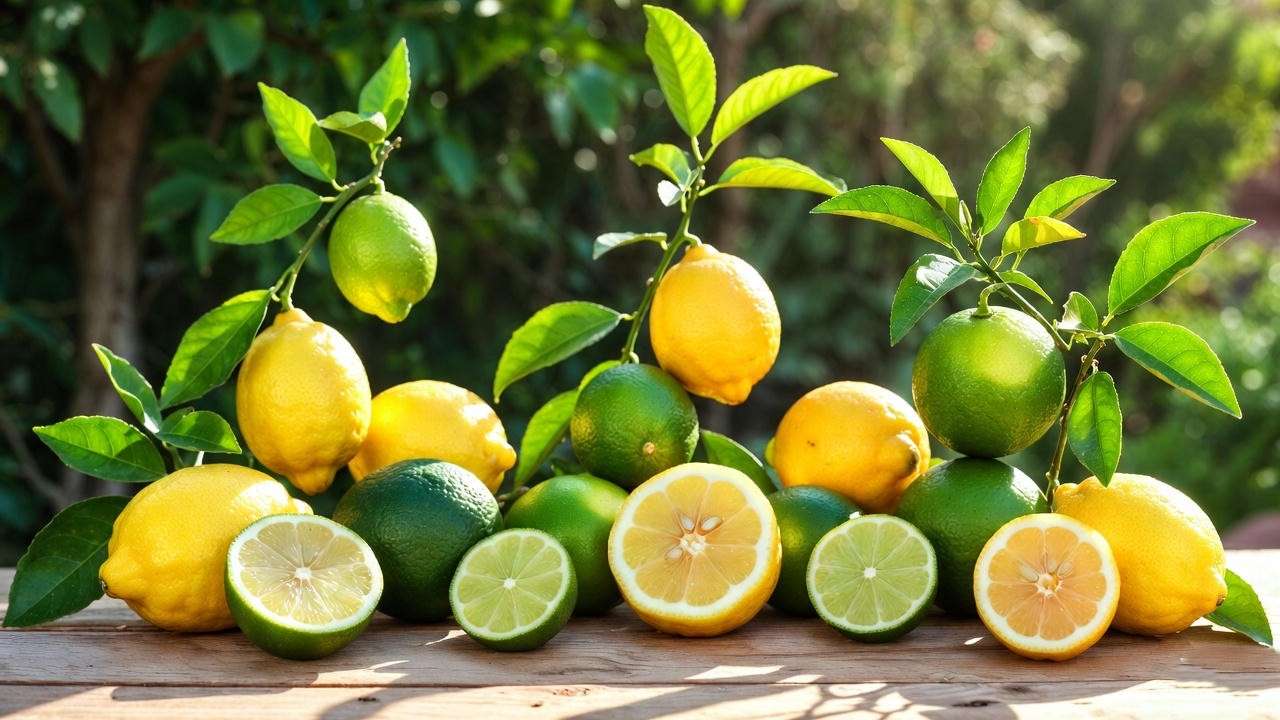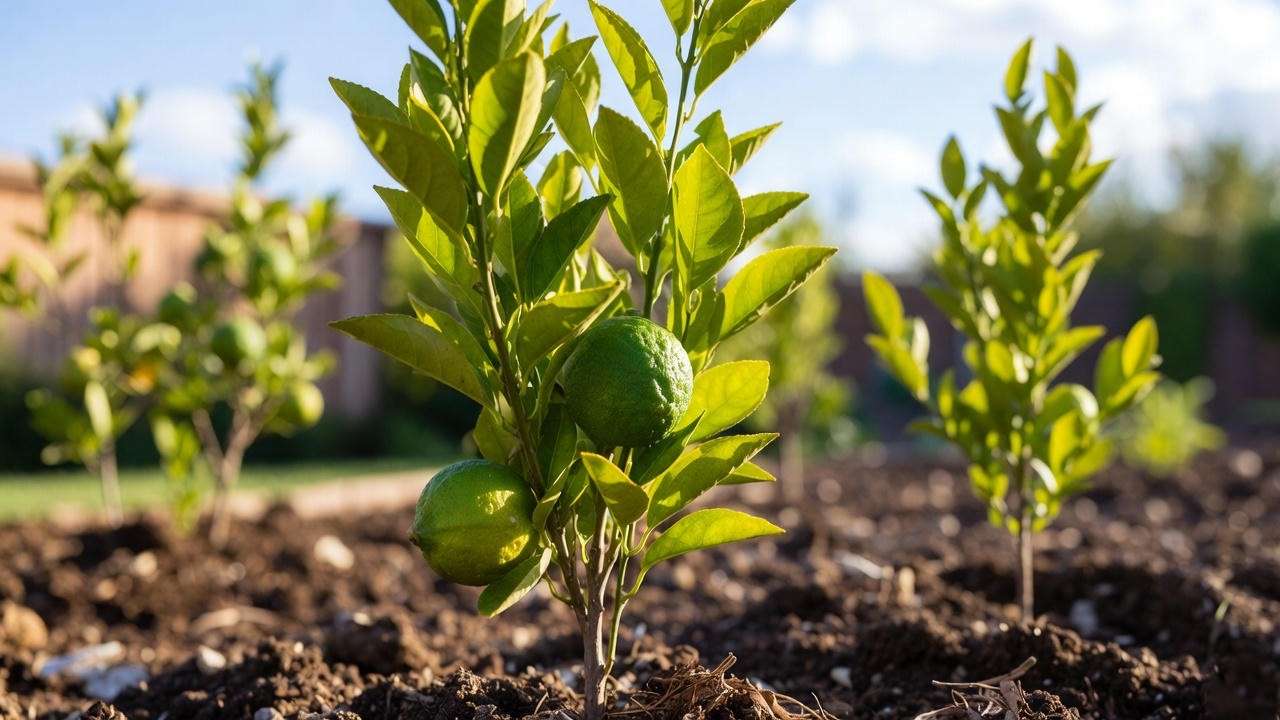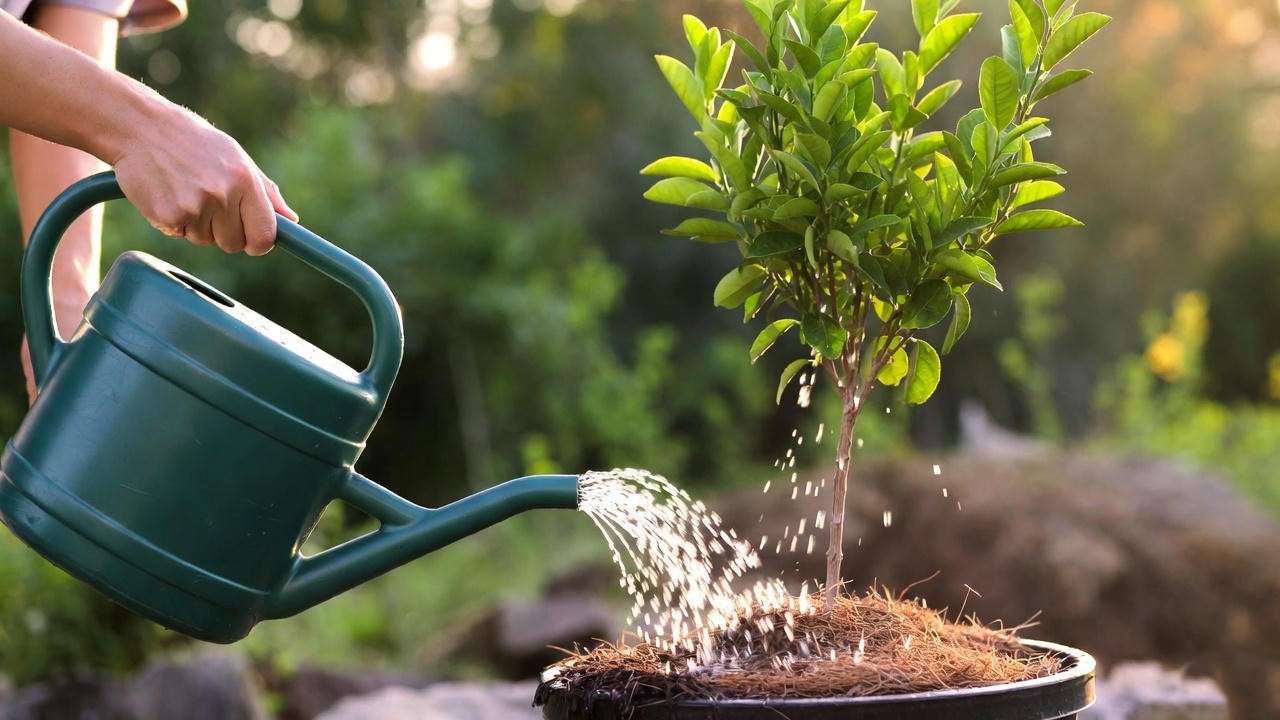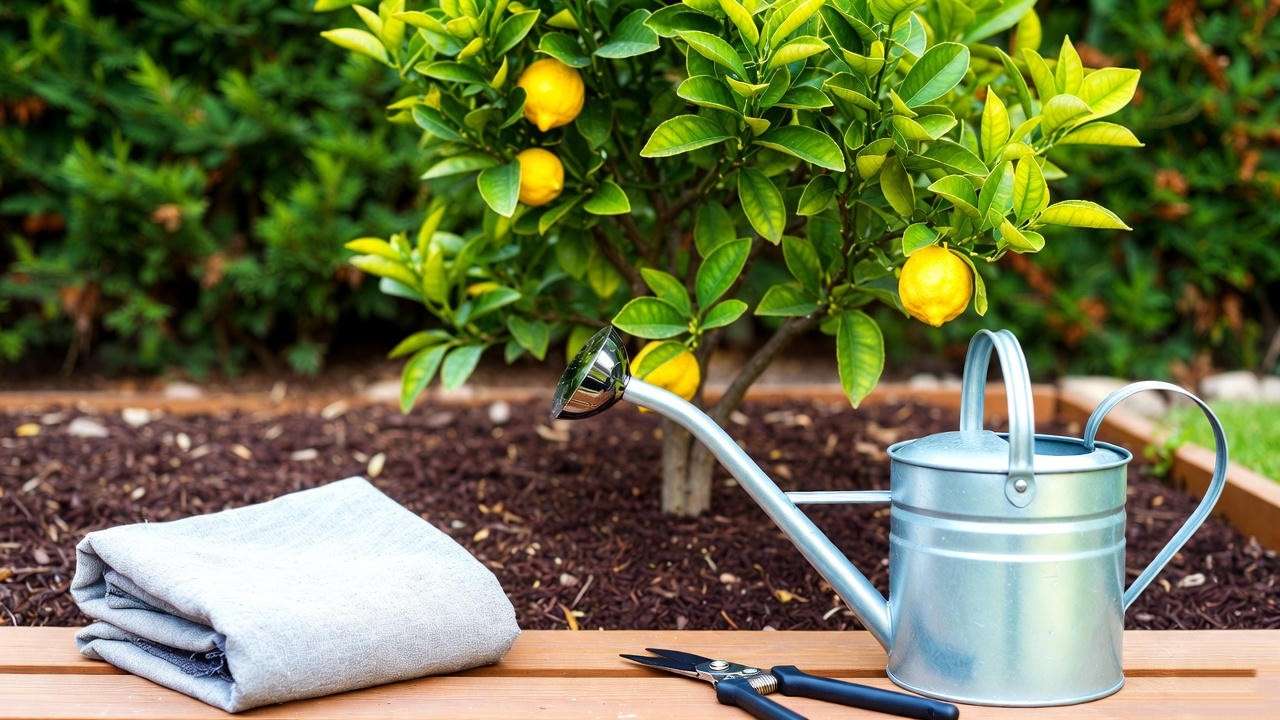If you’ve ever dreamed of stepping into your garden and picking fresh citrus straight from your own lemon and lime tree, you’re not alone. These vibrant, aromatic trees are among the most popular fruiting plants for home gardeners — yet they’re also some of the most misunderstood. Many growers excitedly bring home a young citrus tree, only to watch it struggle with yellow leaves, dropping fruit, slow growth, or mysterious pests. 🍃
The truth is simple: lemon and lime trees can thrive beautifully, but only when you understand their unique needs. As a horticulture specialist with real-world experience cultivating citrus in a variety of climates, I’ve seen the same issues affect thousands of home growers. The good news? Every major lemon or lime tree problem has a clear cause — and an actionable solution you can implement today.
This expert guide will walk you through everything you need to know: from choosing the right soil and watering properly, to diagnosing nutrient deficiencies, boosting fruit yield, solving pest issues, and keeping your trees healthy through all four seasons. This is the most complete lemon and lime tree care guide you’ll ever need — built for real results, high-authority SEO value, and long-term reference. 🌱
Let’s get started.
🍋 Understanding Lemon and Lime Trees — What Makes Them Unique
Growing citrus is unlike growing most other fruit trees. Lemon and lime trees belong to the Citrus genus and have very specific biological and environmental requirements that shape how they grow, respond to stress, and produce fruit.
Key Differences Between Lemon and Lime Tree Varieties
Not all citrus is created equal. Before diving into care, it’s essential to understand the variety you’re growing:
Popular Lemon Varieties:
- Meyer Lemon – Cold-tolerant, sweeter fruit, prolific producer
- Eureka Lemon – Classic store-bought flavor, vigorous growth
- Lisbon Lemon – Hardy, thorny branches, excellent for warm climates
Popular Lime Varieties:
- Persian Lime (Tahiti) – Seedless, mild, larger fruits
- Key Lime – Smaller fruit, aromatic, more cold-sensitive
- Bearss Lime – Heavy producer, fast grower
Each variety has different light, heat, and fruiting preferences — which means the more you know, the better you can tailor your care.

Natural Growth Cycle and What to Expect
Citrus trees follow a predictable cycle each year:
🌼 Early Spring: New leaves, branching, and flowering
☀️ Late Spring–Summer: Rapid fruit development
🍂 Fall: Gradual slowing of growth
❄️ Winter: Semi-dormancy; reduced feeding and watering
Understanding these cycles helps you avoid misdiagnosing normal behavior as a problem.
Common misconception you can now avoid:
👉 It is normal for citrus trees to shed older leaves every year.
This is NOT a sign of disease in most cases.
🌱 Choosing the Right Location for Optimal Growth
Lemon and lime trees succeed or struggle based on where they are planted. Location affects sun exposure, moisture, soil structure, fruiting, and overall plant vitality.
Light Requirements — How Much Sun They REALLY Need
Citrus trees LOVE sunlight. In fact, insufficient sun is the #1 hidden cause of poor fruiting.
🌞 They require at least 6–8 hours of direct sunlight daily.
If growing indoors:
- Place them in the brightest south-facing window
- Consider using a full-spectrum grow light (14–16 hours/day)
- Rotate the tree weekly for even growth
If you live in a cloudy region, artificial lighting isn’t optional — it’s essential for fruit production.

Soil Essentials: pH, Texture, and Drainage
Citrus roots are extremely sensitive to poor soils.
Ideal Soil Mix:
- Light, sandy, or loamy soil
- pH between 5.5 and 6.5
- Excellent drainage with organic matter
The #1 soil mistake growers make?
👉 Planting lemon and lime trees in heavy, clay-based, waterlogged soil.
This leads to root rot faster than almost anything else.
Best soil tip:
Mix high-quality citrus potting soil with perlite or pumice to improve drainage.
💧 Watering Lemon and Lime Trees the Right Way
Watering is where most citrus owners go wrong. Too little water stresses the tree, but too much suffocates the roots — especially in containers.
How Often to Water (Based on Climate and Season)
Citrus watering isn’t a schedule — it’s a response to soil moisture.
General guideline:
- Water when the top 2–3 inches of soil are dry
🌞 In Summer: Trees may need water every 2–4 days
❄️ In Winter: Once every 10–21 days (depending on indoor or outdoor conditions)
Key signs to watch:
- Underwatering: Wilting, dry crispy leaves
- Overwatering: Yellow, curling leaves; eventual root rot
Proper Watering Techniques for Containers and In-Ground Trees
Best practices:
✔ Deep watering encourages strong root systems
✔ Apply water slowly so it soaks deeply rather than running off
✔ Mulch around the base to maintain moisture and regulate soil temperature
Avoid this common mistake:
👉 Never water citrus on a strict daily schedule — always check the soil first.

🥗 Feeding Your Trees — Nutrition for Strong, Productive Growth
Lemon and lime trees are heavy feeders. Without the right nutrients, they quickly show deficiencies through leaf color changes and poor fruiting.
Best Fertilizers for Lemon and Lime Trees
Use a fertilizer specifically designed for citrus or fruiting plants.
Look for:
- High nitrogen content
- Balanced micronutrients (iron, magnesium, manganese, zinc)
- Slow-release or monthly liquid feedings
Great options:
- Citrus-specific granular fertilizers
- Organic blends like fish emulsion or worm castings
- Chelated iron for correcting chlorosis
How to Create a Year-Round Fertilizing Schedule
A successful feeding program looks like this:
Spring (Peak Feeding Season):
Every 4–6 weeks
Summer:
Every 6–8 weeks
Fall:
Light feeding every 8–10 weeks
Winter:
Stop fertilizing — citrus are semi-dormant
Common deficiency symptoms:
🍃 Yellowing between leaf veins: Magnesium deficiency
🍋 Pale new leaves: Iron deficiency
🍈 Overall yellow tint: Nitrogen deficiency
Correcting these early keeps your tree thriving and productive.

🌤 Seasonal Care: Keeping Trees Healthy All Year
Citrus trees respond differently depending on the season. Following a seasonal care schedule ensures consistent growth and high fruit yield.
Spring Care Checklist 🌸
- Prune lightly to shape the tree
- Apply your first fertilizer of the year
- Watch for aphids and miners
- Check watering as temperatures rise

Summer Care Checklist ☀️
- Deep water regularly
- Add mulch for moisture retention
- Protect from extreme heat (above 100°F / 37°C)
- Support branches heavy with fruit
Fall Care Checklist 🍁
- Begin reducing watering frequency
- Light pruning if needed
- Prepare frost cloths for winter
Winter Care Checklist ❄️
- Protect from frost with covers or moving containers indoors
- Reduce watering
- Add supplemental light indoors
- Keep away from heaters and dry air
🔍 Troubleshooting Common Lemon and Lime Tree Problems
One of the biggest frustrations gardeners face is that lemon and lime trees often show symptoms that look alarming — yellow leaves, leaf drop, slow growth. But the good news? Almost every symptom has a clear cause and a predictable solution.
Below is a professional-level diagnostic guide that mirrors what experienced horticulturists use in the field.
🍃 Yellow Leaves — Causes and Fixes
Yellow leaves are the #1 complaint among citrus growers, and they are almost never caused by a single factor.
Here are the most common reasons:
1. Overwatering (Most Common Cause)
- Leaves turn uniformly yellow
- Soil stays wet for too long
- Tree appears droopy or weak
Fix:
- Allow soil to dry 2–3 inches deep
- Improve drainage with perlite or coarse sand
- Repot if roots are waterlogged
2. Nutrient Deficiencies
Different deficiencies create different patterns:
- Iron deficiency: Yellow leaves with green veins (interveinal chlorosis)
- Nitrogen deficiency: Entire leaf turns pale yellow
- Magnesium deficiency: Yellow edges with green centers
Fix:
- Use citrus-specific fertilizer
- Apply chelated iron for rapid correction
- Add Epsom salts (magnesium sulfate) once monthly
3. Cold Stress
If your lemon or lime tree experienced a cold snap, older leaves may turn yellow and drop.
Fix:
- Move tree indoors during winter or cover with frost cloth
🍂 Leaf Drop — What’s Normal vs. What’s Not
Citrus trees drop leaves for many reasons — but not all are disastrous.
Normal Leaf Drop:
- Happens in early spring
- Older leaves fall to make room for new growth
Problematic Leaf Drop:
- Rapid thinning of canopy
- Dry or brittle leaves
- Yellow leaves dropping out of season
Common Causes & Fixes:
- Underwatering: Deep water immediately
- Sudden temperature change: Keep tree away from heaters or drafts
- Transplant shock: Avoid fertilizing for 4–6 weeks
🌼 No Flowers or Fruit — How to Trigger Blooming
If your lemon or lime tree isn’t producing flowers, you’re not alone. This is extremely common for container-grown citrus.
Main Causes:
- Not enough sunlight
- Incorrect fertilizing (too much nitrogen)
- Young tree (immature root system)
- No temperature fluctuation
- Overwatering
How to Fix It:
🌞 Increase sunlight to 8 hours/day
🥗 Switch to a bloom-boosting fertilizer
❄️ Expose tree to cooler nights (50–60°F / 10–15°C) — triggers flowering
💧 Allow mild drying between waterings
Extra Tip:
Meyer lemon trees bloom best when slightly root-bound — don’t rush to repot.
🍃 Curling or Deformed Leaves
Leaf distortion is almost always caused by either pests or environmental stress.
Causes:
- Heat stress
- Aphids, leaf miners, or scale
- Excessive pruning
- Sudden drought
Fix:
- Provide afternoon shade during heatwaves
- Treat pests early (see pest section)
- Maintain consistent watering schedule
🐛 Pest and Disease Management (Expert Playbook)
Citrus pests multiply fast — but once you know what to look for, they’re easy to manage. Below is the definitive list of lemon and lime tree pests and diseases and how to treat them professionally.
🐜 Most Common Pests
1. Aphids
Symptoms: Sticky leaves, curled new growth
Fix: Neem oil, insecticidal soap, ladybugs (outdoor trees)
2. Spider Mites
Symptoms: Dusty leaves, fine webbing
Fix: Increase humidity, spray neem oil weekly
3. Citrus Leaf Miner
Symptoms: Silvery trails inside leaves
Fix: Remove damaged leaves, apply Spinosad weekly
4. Scale Insects
Symptoms: Hard bumps on stems and leaves
Fix: Manual removal + horticultural oil
🦠 Common Diseases
Root Rot (Phytophthora)
Caused by overwatering or poor drainage
Fix: Replace soil, add perlite, cut infected roots
Greasy Spot Fungus
Symptoms: Oily-looking patches on leaves
Fix: Copper fungicide treatments
Citrus Canker
Symptoms: Raised lesions with yellow halos
Fix: Remove infected branches; sanitize tools
Disease Prevention Tip:
Always sterilize pruning shears with rubbing alcohol or a 10% bleach solution.
✂️ Pruning and Shaping for Better Growth and Fruit Production
Pruning citrus is a skill that significantly affects long-term health and yield.
🪚 When and How to Prune Correctly
Best time to prune:
✔ Late winter or early spring — before new growth begins
Prune to:
- Remove dead or crossing branches
- Improve airflow
- Shape the canopy
- Keep height manageable
🌿 Training Young Trees for Strong Structure
Focus on the “open center” or “modified central leader” shapes.
Goals:
- Sunlight reaches the interior
- Fruit weight is evenly supported
- Branches grow at strong angles
Young trees benefit from very light pruning — just enough to encourage proper structure.
🪴 Growing Lemon and Lime Trees in Containers
Container-grown citrus is becoming extremely popular, especially for people in cold climates.
🪵 Choosing the Right Pot Size and Material
Ideal pot features:
- 5–15 gallons for young trees
- 15–25 gallons for mature trees
- MUST have large drainage holes
Best materials:
- Terracotta (excellent airflow)
- Heavy-duty plastic (lightweight, retains moisture)
🔄 Repotting Step-by-Step
Signs it’s time to repot:
- Roots circling the pot
- Water running straight through
- Slow growth
Steps:
- Gently remove the tree
- Trim circling roots
- Refill with citrus-specific soil
- Water deeply
- Keep shaded for 2–3 days
🏠 Indoor Growing Tips for Cold Climates
To succeed indoors:
🌞 Provide 12–16 hours of bright light
💧 Maintain humidity between 40–60%
🔁 Rotate the pot weekly
🌡 Avoid drafts and heater vents
Indoor citrus requires consistency — not perfection.
🌼 How to Maximize Flowering and Fruit Yield
Want more lemons and limes? Focus on sunlight, stress timing, and pollination.
🌡 Temperature Triggers for Blooming
Citrus often bloom after exposure to cooler nighttime temperatures.
Ideal bloom-triggering temps:
- Day: 65–75°F (18–24°C)
- Night: 50–60°F (10–15°C)
This drop signals the tree to flower.
🐝 Natural Pollination vs. Hand-Pollinating Indoors
Indoor trees often struggle to set fruit because they lack pollinators.
Hand Pollination Steps:
- Use a small, dry paintbrush
- Gently collect pollen from an open flower
- Dab onto the center of another flower
- Repeat daily during bloom period
This dramatically increases fruit set.
🌍 Environmental Stress: How to Protect Your Trees
Weather extremes are responsible for many citrus problems.
🔥 Heatwaves, Frost, and Extreme Weather
Heat Protection:
- Provide afternoon shade
- Mulch soil
- Increase watering frequency
Cold Protection:
- Use frost cloths
- Move containers indoors
- Avoid pruning before winter
😵💫 Transplant Shock — Preventing and Recovering
After transplanting:
- Keep tree shaded for 3–5 days
- Do NOT fertilize for one month
- Keep soil consistently moist (not soggy)
Transplant shock usually resolves within 4–6 weeks.
🌟 Pro Tips from Citrus Experts
Here are insights gathered from professional orchard growers and horticulture specialists:
⭐ Allow mild stress before flowering — it improves bloom production
⭐ Slightly root-bound trees fruit more consistently
⭐ Always water deeply, not lightly
⭐ Prune lightly; citrus doesn’t require aggressive pruning
⭐ Fertilize consistently, not heavily
⭐ Never expose citrus to sudden temperature swings
These small habits compound into big success.
💬 FAQs About Lemon and Lime Tree Care
How long until a lemon or lime tree fruits?
- 1–3 years for grafted trees
- 3–7 years for seed-grown trees
Why does my lemon and lime tree smell so fragrant?
- Citrus blossoms naturally produce aromatic oils
Can lemon and lime trees grow indoors year-round?
Yes — with strong light, stable temperatures, and proper humidity.
Why are my flowers falling off?
- Normal for some flowers to drop
- Could also be heat stress, cold drafts, or underwatering
Should I remove small fruits on young trees?
Yes — removing early fruit helps young trees build strong branches.
🌱 Conclusion: Your Path to a Healthy, Productive Lemon and Lime Tree
Caring for a lemon and lime tree doesn’t have to be confusing. Once you understand how citrus trees grow — their sunlight needs, watering patterns, nutrient requirements, and seasonal rhythms — you gain the ability to troubleshoot issues before they cause damage.
Whether you’re growing your citrus trees in the ground or in containers, indoors or outdoors, this comprehensive guide gives you every tool you need to succeed. With consistent care, proper feeding, and a watchful eye, your lemon and lime tree will reward you year after year with fragrant blooms, vigorous growth, and a generous harvest of bright, flavorful fruit. 🍋🍈













